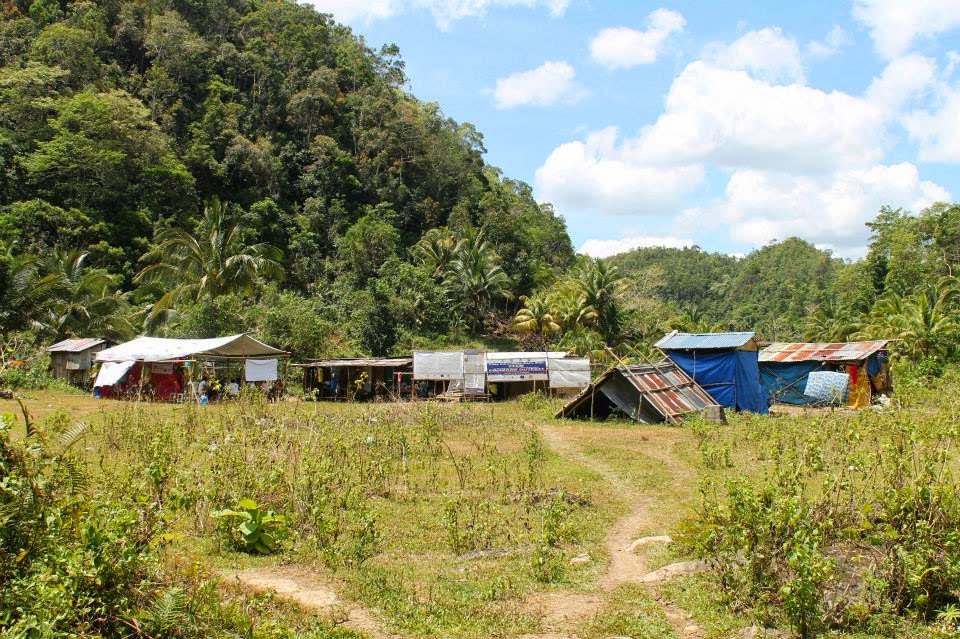BY: REY ANTHONY H. CHIU

TAGBILARAN CITY BOHOL, March 16 (PIA) –
Neighbors are neighbors, in good times and in bad.
This fairly describes Dagohoy Bilar
settlement, where current evacuation camp dwellers ask helping groups to
include in their beneficiaries those who are not in camp anymore.
Here, nestled in a valley ringed with
tall limestone hills, near the rotting foundations of an old abandoned school,
lie a crude temporary settlement of people from the sitios of barangay
Dagohoy and Bonifacio, in Bilar.
Here in a place where at the base of
the hills are wide ricefields, people build their sparsely spaced houses near their
farms. Sometimes you won’t see them in the tall shrubbery until you’re much
closer.
Here was paradise, until the earthquake
of October 15 shook the hills and rolled tons upon tons of boulders from the
hilltops into the valley. Some flattened homes. People died here.
Not too far away, a house was literally
flattened, posts turned into brittle toothpick, when a three ton boulder
perched some 100 meters above, smothered the house where a mother, an infant,
an aunt and a grandmother were resting after breakfast.
Now, the traces of the tremor are the
scarred hillsides, yellow contrasts in the green vegetation that crowns the
hills.
Here too, huge boulders remained
untouched, some roads partially blocked by some of them.
Somewhere in a hill-ringed valley at
the heart of Barangay Dagohoy, earthquake survivors pitched crude camps, almost
inaccessible by 4 wheeled vehicles.
In this crude encampment used to dwell
17 families, striving on their own, without the help of donors until late
December.
The bitter cold pushed some dwellers
who think no help was coming, to go back to their ruined houses if only to be
sheltered from the cold nights and scorching days at the tents.
Now, with only 7 families in the camps,
international humanitarian organizations have promised them at least
alternative transitory shelters (ATS), as long as a lot can be acquired for
these 7 families.
ATS, according to Christie Joy Bacal is
a shelter assistance comprising of a whole house with an attached communal
service facilities. In fact, several shelter units from donors have in them
complete toilet facilities, reiterates Bacal who works as communications
specialist of the International Organization for Migration (IOM).
Now, with assistance in line, some
dwellers who have returned to their homes, asked if they could be included
among the 7 beneficiaries.
“We used to be together here, and as
good neighbors, we bring to you their request,” pleaded Angelita Oblena, camp
Manager at Eskwelahan Daan Camp site.
As neighbors, we can’t afford to live
in better shelters away from the risk of boulders, when we knew they live, in
areas which should have been totally evacuated, the camp manager said in
Cebuano during the Pulong-Pulong sa Komunidad with Philippine Information
Agency and IOM on March 12.
As to donor agencies, informants said
as long as these people in risk areas are within the list of beneficiaries,
they can be assisted to their new shelters which the government could
purchase.
Barangay Kagawad Bienvenido Tapao
shared that pending the acquisition of a resettlement lot by the local
government, the evacuees have arranged for a 1.1 hectare lot for temporary
resettlement not too far from the camp site.
International shelter assistance groups
have assured quake victims whose houses were totally wrecked and those who have
been advised to relocate, core shelters and ATS until they could return to
normal lives, echoed IOM’s Bacal.
IOM, a group into shelter assistance is
also helping communities manage the camps as well as coordinate information
assistance to settlers.
Along with shelter aids, including
repair kits to houses which the quake partially ruined, other organizations are
helping communities put up water and sanitation kits including hygiene tips,
health and medical services, livelihood assistance through cash for work
schemes and long term alternative livelihood that would allow settlers to live
decent lives.
He also asked international donors
present at the forum, if they could be helped in bringing water to the new
site.
UNICEF’s Cogie Vidad also assured her
group would talk with local officials and her cluster member organizations to
share costs in tapping communal tap-stands and putting in a reservoir at the
new resettlement.
On this, although a quick settlement of
their situation is still bleak, faces of evacuation center settlers here appear
a bit lighter after the forum, knowing that they may be relocated to a new
site, they would be bringing still their neighbors.
With the neighbors working together to solve problems, life won't
be tough, after all, councilor Omac said. (mbcn/rahc/PIA7-Bohol)
